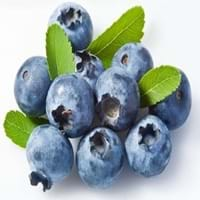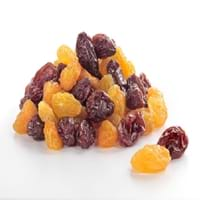Health Benefits
Cancer prevention, Cures gastro-intestinal troubles, Improves night vision, Improves stomach health, Prevents diabetes, Prevents high blood pressure, Reduces blood circulation problems
Acidity treatment, Cancer prevention, Good for diabetics, Prevents constipation, Prevents Anaemia
General Benefits
Fights against infections, Helps in weight loss, Prevents blood clotting in vessels, Treatment of urinary tract infections
Boosts immune system, Cures fever, Eye care, Fights against infections, Strengthens bones
Skin Benefits
Anti-aging benefits, Nourishes skin, Protects against skin damage
Anti-aging benefits, Reduces wrinkles, Skin rejuvenation
Hair Benefits
Prevents hair loss
Protects hair
Allergy Symptoms
Not Available
Anaphylaxis, Asthma, Breathing difficulty, Coughing, Drop in blood pressure, Hives, Skin rash, Stuffy nose, Swelling of mouth, tongue or lips, Wheezing
Side Effects
Decrease in blood sugar levels, Diarrhoea, Dizziness, Headache, Internal bleeding, Stomach pain
Allergic reaction
Lactating Women
Yes
Not Available
Best Time to Eat
As a snack in the late afternoon, Don't consume at night and before bed, Eat the fresh ones, avoid mixing with any other foods, don't eat after meal., Morning time (before lunch)
Any time except an hour after meal
Vitamin B5 (Pantothenic Acid)
Vitamin C (Ascorbic Acid)
Vitamin K (Phyllochinone)
Calories in Fresh Fruit with Peel
Calories in Fresh Fruit without Peel
Not Available
Not Available
Calories in Frozen Form
Not Available
Not Available
Calories in Dried Form
Not Available
Not Available
Calories in Canned Form
Not Available
Not Available
Season
Summer
All seasons
Varieties
Dwarf bilberry, Piper, bog blueberry, Northern bilberry, Mountain bilberry and Oval-leaved bilberry
Dark raisins, White or golden raisins, Sultanas and Currants
Seedless Variety
No
Not Available
Color
Dark purple
Black, Blue, Green, Purple, Yellow
Inside Color
Light Green
Brown
Origin
Unknown
Central Europe, Western Asia
Grows on
Trees
Not Available
Soil Type
Moist, Well-aerated
Clay loam, Sandy loam
Climatic Conditions
Cold
Warm
Facts about
- Bilberries are used in manufacturing of alcoholic drinks.
- They are used to improve aromas of sorbets.
- The green extract of it's leaves is used in textile industry as natural dye.
- 30th April is known as National Raisin Day.
- Fresno, California is known as raisin capital of the world.
- Half of world's raisin supply is produced in California.
Top Producer
Japan
United States of America
Other Countries
Denmark, Finland, Iceland, Sweden
Afghanistan, Argentina, Australia, Chile, China, Iran, South Africa, Turkey, Uzbekistan
Top Importer
United States of America
Europe
Top Exporter
Chile
Turkey
Botanical Name
Vaccinium myrtillus
Vitis Vinifera
Synonym
blaeberry, whinberry, European blueberry, whortleberry
Not Available
Subkingdom
Tracheobionta
Tracheobionta
Division
Magnoliophyta
Magnoliophyta
Class
Magnoliopsida
Magnoliopsida
Subclass
Dillenhidae
Not Available
Family
Ericaceae
Vitaceae
Species
Vaccinium myrtillus
Vitis vinifera
Generic Group
Heath
Grape
Difference Between Bilberry and Raisin
We might think that Bilberry and Raisin are similar with respect to nutritional value and health benefits. But the nutrient content of both fruits is different. Bilberry and Raisin Facts such as their taste, shape, color, and size are also distinct. The difference between Bilberry and Raisin is explained here.
The amount of calories in 100 gm of fresh Bilberry and Raisin with peel is 44.00 kcal and 299.00 kcal and the amount of calories without peel is Not Available and Not Available respectively. Thus, Bilberry and Raisin belong to Low Calorie Fruits and High Calorie Fruits category.These fruits might or might not differ with respect to their scientific classification. The order of Bilberry and Raisin is Ericales and Vitales respectively. Bilberry belongs to Ericaceae family and Raisin belongs to Vitaceae family. Bilberry belongs to Vaccinium genus of Vaccinium myrtillus species and Raisin belongs to Vitis genus of Vitis vinifera species. Beings plants, both fruits belong to Plantae Kingdom.









